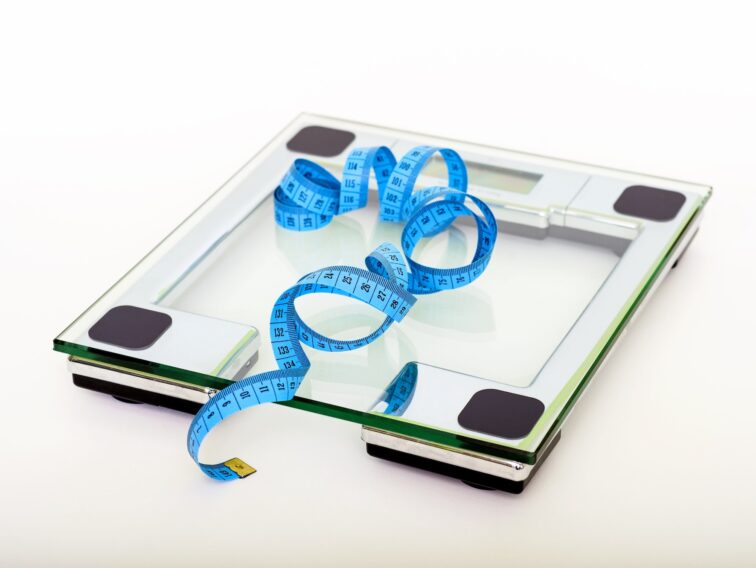Gut related weight loss or gain is a concern for many of my clients.
Not being able to keep weight on is usually an issue of low stomach acid (can’t break down food into absorbable nutrients) or malabsorption of nutrients in the small intestine due to bacterial overgrowth.
Not being able to lose weight not matter how much you restrict or burn calories is another issue I see among clients.
The weight loss industry has done a lot of damage to people’s health as they follow extreme diets that slow down metabolism or peristalsis as the body goes into starvation/survival mode.
Fat is protection for the body, it ramps up fat storage to ensure survival when the body senses a big calorie deficit. It will conserve fat above all else. So trying harder to diet and exercise can backfire for weight loss.
There is a much healthier way to lose weight by not fighting your own survival biology.
On a side note, disordered eating or not getting enough calories for a prolonged period of time, particularly when over exercising, can lead to IBS. I have worked with many people in this situation.
To lose weight you have to eat. But eating in a way that supports the right bacterial balance in the gut is the intelligent and healthy way to lose weight. It is a win for you AND your body.
The right bacterial balance for weight loss
There are two major categories of bacteria in the gut, that make up 80 percent of the biome: Firmicutes and Bacteroidetes.
It is important to have a healthy balance of both in the gut. But if the firmicutes species overgrow, it can lead to weight gain. That’s because firmicutes bacteria extract and absorb more fat and thus more calories from food.
Firmicutes have lots of benefits such as producing butyrate, an anti-inflammatory short chain fatty acid. While we want a healthy number of firmicutes in the biome, we don’t want it to overwhelm the bacteroidetes in number.
This ratio has been studied extensively in both humans and mice. Those with a higher ratio of firmicutes gain more weight while eating the same amount of calories.
There’s another member of the biome that can cause weight gain: methanogens. They are technically not bacteria, but classified as archae. They have a similar function as firmicutes, in terms of extracting more fat and calories from food.
If you have too many methanogens and firmicutes, losing weight is an uphill battle and massive frustration. It’s not a battle that can be won through dieting because eating too little will slow down metabolism and cause another host of digestive problems.
You can measure your ratio of firmicutes to bacteroidetes along with methanogens and other key bacterial species on the GI Map. This is an at-home test I order for all of my clients.
The healthy way to lose weight
Balancing your biome will have a lot of health benefits, among which is healthier, easier weight loss.
So what raises firmicutes?
A diet higher in fat, like the ketogenic diet or a lower carb, higher fat diet can be one cause. Too much fat and protein can feed methane. This could be why keto doesn’t work for some people.
Eating a diet high in sugar and processed carbs is another cause of too many firmicutes. Cutting out sugar is one of the hardest things for people to do. Sugar is addictive and is added to comforting foods that bring us pleasure.
That’s why I wrote two cookbooks that ease the transition from regular treats that raise inflammation to low-sugar treats that cut out inflammatory ingredients and add in plenty of fiber to feed bacteroidetes species and lower firmicutes.
What raises bacteroidetes?
You can support bacteroidetes with a diet high in resistant starches and fibres like beans.
When people can’t digest beans it’s because there is a low level of bacteroidetes in the gut. Or low stomach acid. You don’t need to eat a lot of beans to rebuild bacteroidetes, a little bit goes a long way.
1 teaspoon to 1 tablespoon of well-cooked beans per day for a few weeks can slowly raise bacteroidetes and get the body more used to digesting beans. Beans should be soaked and well cooked. Use a pressure cooker to cook the beans well and mash them to make them even easier to digest.
If you can only tolerate 1 tablespoon of beans after a few weeks, stick to that amount. You are still making progress. Slow progress is the best progress because it’s least disturbing to your body.
If even 1 tablespoon of beans is troublesome it may be a sign to work on stomach acid. Things that lower stomach acid are stress, lack of minerals like zinc, and most commonly an h. pylori infection.
If you can’t tolerate beans or increase the diversity of prebiotic plant fiber in your diet, I suggest adding prebiotic fiber to support bacteroidetes.
If you have SIBO you may not be able to tolerate prebiotic fibers like pysillium or Galacto-Oligosaccharides. Partially hydrolyzed guar gum is a safe source of prebiotic fiber that actually helps lower methane in the gut.
I like a product on Fullscript that includes gut supportive additions. If you live in the U.S. and would like a recommendation for the brand I use with clients, send me an e-mail (my address is at the end of the post).
To lower a methane overgrowth I suggest lowering excess fat and protein in your diet, but don’t go too low fat or low protein. Using an herb like allicin is the best way to reduce methane numbers. I like to use high dose allicin but the potency and amount depends on the level of overgrowth.
Methane can bloom in the large intestine or small intestine, so taking a SIBO breath test could also show methane levels in the gut.
Methane also slows motility and peristalsis in the body and can cause bloating, constipation and other gut symptoms.
Things that disrupt bacterial balance
We know that a poor diet, stress, toxins and antibiotics can disrupt a healthy bacterial balance. But surprisingly, jet lag and an erratic, irregular sleep and meal schedule can also have a detrimental effect.
As we learn more and more about the biome, we discover healthier ways to shift metabolism, motility, absorption and weight by shifting and supporting our biome.
It might be a slower process and require testing and dietary counselling, but it’s the smarter way to approach weight loss resistance.
Other reasons for weight loss resistance could be a slow thyroid or lots of inflammation in the gut. But if you’ve ruled out thyroid problems, look at biome next.
If you are done with dieting and over exercising and need help balancing your biome, get in touch at angelaprivin@yahoo.com
Tending to your biome, is like tending to a garden. You have to test the soil and give it the nutrients it needs for the right plants to grow. And sometimes you need to pull some weeds along the way. Once you learn how it becomes easy.
Eating too little and moving too much is based on the outdated calories in and calories out model of the 1980s. It’s time the weight loss industry caught up to the latest biome science.
You can have it all. You can eat enough, get rid of digestive symptoms and feel good in your clothes by rebalancing your gut bacteria.


